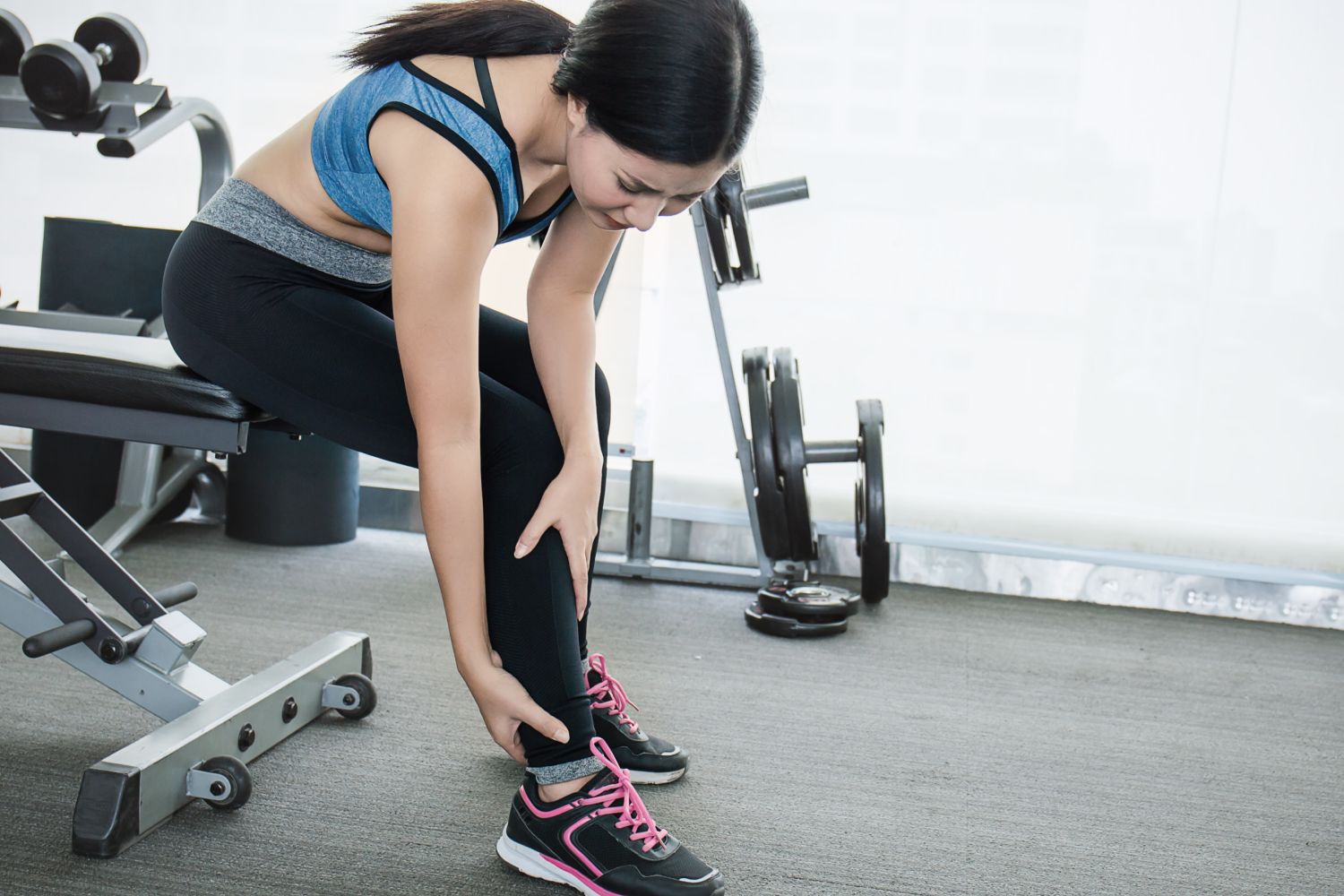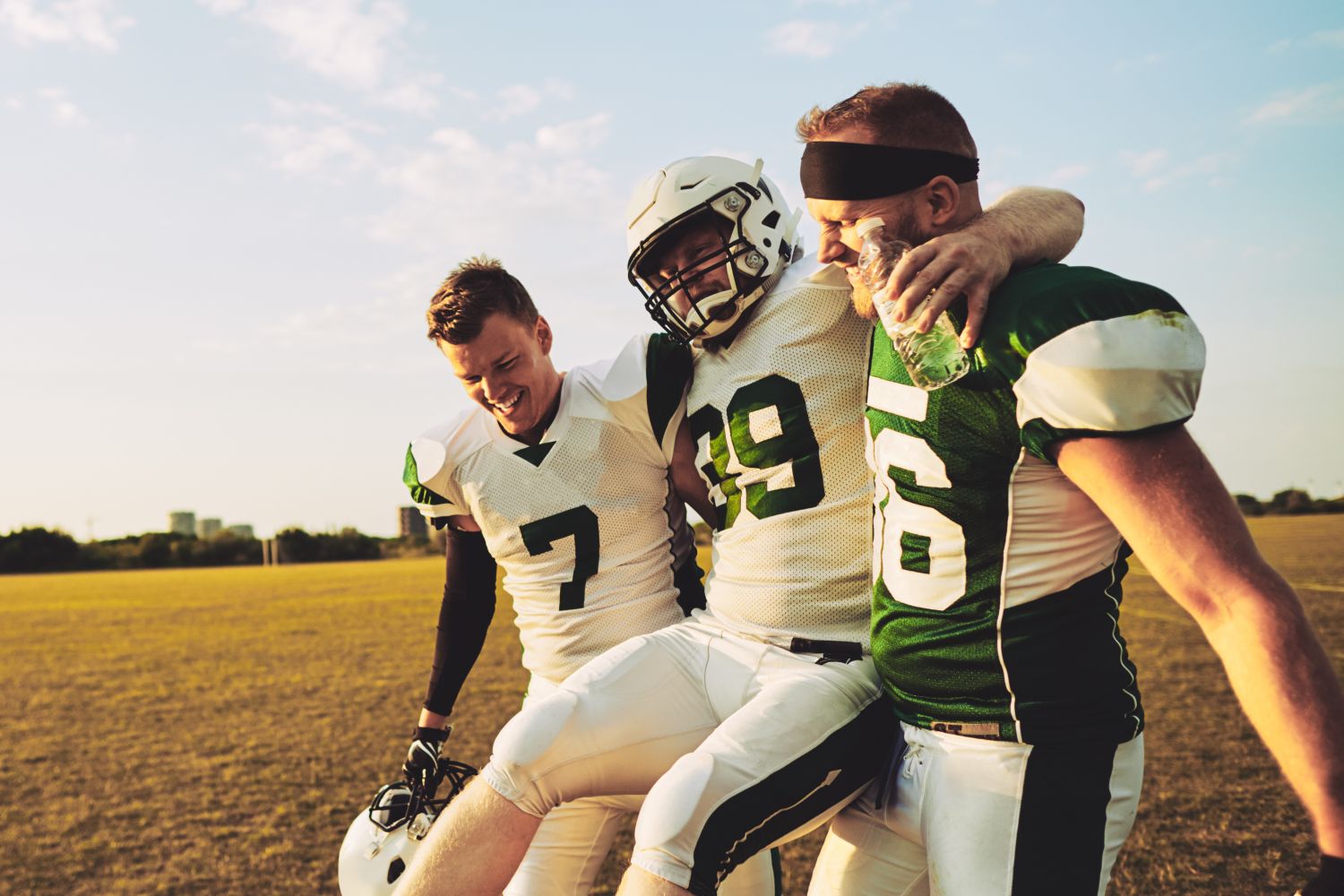Medically Reviewed By | Dr. Kate Panawash, PT, NCS, DPT
Football, known for its physical intensity and high-impact plays, poses inherent risks of injuries to players at all levels, from high school to professional leagues. The dynamic nature of the sport, involving tackles, sudden directional changes, and collisions, makes football athletes prone to injury.
Understanding and addressing these injuries become paramount for players' well-being and sustained performance on the field.
What Are the Most Prevalent Football Injuries?
Football athletes experience a range of injuries, with some being more prevalent and impactful than others. Among the most common football injuries are concussions, posing significant risks due to head impacts during tackles or collisions. Additionally, ankle and knee sprains are frequent occurrences, often resulting from sudden twists or awkward landings.
Ligament tears, particularly the anterior cruciate ligament (ACL) and medial collateral ligament (MCL) are prevalent and can sideline players for significant periods of time, often an entire season, Hamstring strains, the muscles at the back of the thigh, are also common due to rapid sprints or sudden stops.
Shoulder injuries, including dislocations and rotator cuff strains, can occur, particularly in linemen and players involved in high-contact plays. These injuries can significantly affect a player's ability to perform and require proper rehabilitation.
While severe injuries like ACL tears or meniscus damage grab attention, overuse injuries such as muscle strains and lower leg injuries can also impair a player's performance and longevity. High school and professional football players alike face these injury risks, highlighting the need for comprehensive injury prevention and effective recovery strategies.
Understanding the nuances and impact of these common football injuries is vital for players, coaches, and medical professionals to implement proactive measures and proper care, ensuring players can enjoy the sport safely and sustainably.
How Can Incrediwear Help Football Injury Recovery?
Incrediwear offers a transformative approach to recovery through its groundbreaking fabric technology. This innovative technology harnesses the body's natural heat to stimulate the release of negative ions within the fabric.
These ions help maintain healthy blood flow, soothe discomfort, and support joints, all of which aid in the recovery process for various football-related injuries. Specifically engineered to address the needs of athletes, Incrediwear's technology provides non-invasive, drug-free solutions for managing discomfort and the healing process.
Whether recovering from sprains, ligament tears, muscle strains, or other football-related injuries, Incrediwear's products, such as their ankle sleeve, help players by supporting recovery time and comfort during rehabilitation.
How Can Football Injuries Be Prevented and Managed?
Preventing and effectively managing football injuries requires a multi-faceted approach encompassing various strategies and practices. By implementing comprehensive injury prevention measures and leveraging innovative technologies like Incrediwear, football players can manage their overall health, ensuring their sustained performance and longevity in the sport.
Warm Up Routines
Proper warm-up routines are essential to prepare muscles and joints for the high-impact demands of the game. Targeted dynamic stretching exercises and progressive warm-up drills prepare the body for the demands of the sport and can vary by the position played.
Conditioning and Strength Training
Focusing on injury prevention through appropriate conditioning and strength training programs helps fortify the body against potential injuries. Strengthening muscles around vulnerable areas such as the knees and shoulders can reduce the likelihood of ligament tears and dislocations.
“A training program that includes anticipatory and reactionary strength and balance components including various perturbation strategies can be dual purpose by improving performance and help reduce injury risk,” notes Katelyn Panawash, Doctor of Physical Therapy (DPT) and Board Certified Neurologic Clinical Specialist (NCS).
Getting Medical Clearance
Ensuring athletes undergo thorough physical examinations and receive clearance from medical professionals before returning to play after an injury is crucial. Athletic trainers and healthcare providers play pivotal roles in monitoring players, identifying warning signs, and guiding their rehabilitation.
Education and Rest
Education about safe playing techniques, understanding the signs of fatigue, and incorporating proper rest periods are integral components of injury prevention. Addressing the risk of overuse injuries, especially in high-contact positions, is paramount to avoid long-term damage. “Do not undervalue the importance of sleep and nutrition and the impact they have on performance,” says Panawash.
Cool Downs
Engaging in post-game cool-downs, and, if applicable, adhering to proper recovery protocols following minor injuries can prevent exacerbation and long-term complications.
“Seeking out a professional like a Physical Therapist or an experienced personal or athletic trainer to get guidance on a cool-down and recovery program targeted to your position on the football field is a good idea,” Panawash says.
What Recovery Techniques Aid Football-Related Injuries?
Effective recovery techniques for football-related injuries involve evaluation by a healthcare professional. An athletic trainer is usually the first one at the scene and is imperative for stabilizing and determining the level of medical support needed immediately post-injury. Then an evaluation by a physical therapist and/or orthopedic doctor is important to get a full picture of the injury and a rehabilitation plan.
“Depending on the injury and your goals interventions may range from activity modifications, long-term rehabilitation, or potentially surgery or any combination of these. It is important to work with a healthcare professional post-injury to restore optimal function for players on their path to recovery,” Panawash notes.
How Accessible Is Healthcare for Football Injuries?
Access to specialized healthcare for football-related injuries is critical for players' well-being. With dedicated orthopedic providers, sports medicine facilities, and medical professionals available, players have accessible resources to address their healthcare needs.
From high school athletes to professional players in NFL cities like Dallas, access to prompt and specialized care ensures efficient management and recovery from football injuries.
What Is the Role of Physical Therapy?
Physical therapy plays a pivotal role in the rehabilitation of football-related injuries. Therapists tailor programs targeting specific areas like knee injuries, quadriceps, and Achilles tendon issues. They focus on strengthening, flexibility, and proprioception exercises, aiding recovery from ligament injuries such as ACL tears and ankle sprains.
Additionally, physical therapy addresses common sports injuries like hamstring strains and kneecap issues, enhancing players' functional abilities and reducing the risk of re-injury in contact sports.
“Physical therapy plays a pivotal role in the rehabilitation of football-related injuries. Physical Therapists tailor programs targeted to the specific injury and the specific goals of the player. The specific demands of each position can vary greatly, therefore the rehabilitation plans do as well. A comprehensive program will not only target the strength, stability, flexibility, mobility, and resilience a football player will need in life and in the position they play, but also discuss stress, sleep, and nutrition and the impact these things can have on the recovery process,” says Panawash.
Wrapping Up
In American football, prioritizing recovery and injury prevention is crucial for sustained performance and player longevity. Whether managing ACL injuries or other ligament injuries, dealing with ankle sprains and hamstring injuries, effective strategies like proper warm-up routines, comprehensive rehabilitation, and leveraging innovative technologies such as Incrediwear aid in recovery.
By addressing the inherent risks associated with contact sports and promoting proactive injury prevention measures, football players can continue to excel on the field while minimizing the impact of injuries on their careers and overall well-being.
Sources:
Twelve Years of National Football League Concussion Data | NIH
Anterior Cruciate Ligament (ACL) Injuries - OrthoInfo | AAOS
Read more

Medically Reviewed By | Dr. Kate Panawash, PT, NCS, DPT Are shin splints disrupting your active routine? Shin splints refer to the pain felt along the shinbone, typically caused by rapid increases ...

Medically Reviewed By | Dr. Kate Panawash, PT, NCS, DPT Are shin splints disrupting your active routine? Shin splints refer to the pain felt along the shinbone, typically caused by rapid increases ...






Leave a comment
All comments are moderated before being published.
This site is protected by hCaptcha and the hCaptcha Privacy Policy and Terms of Service apply.